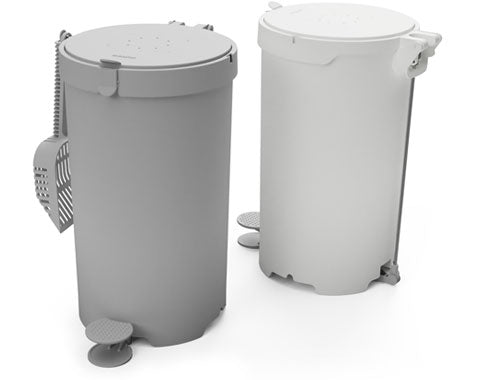Litter Boxes

Modkat Flip
Front-Entry Litter Box
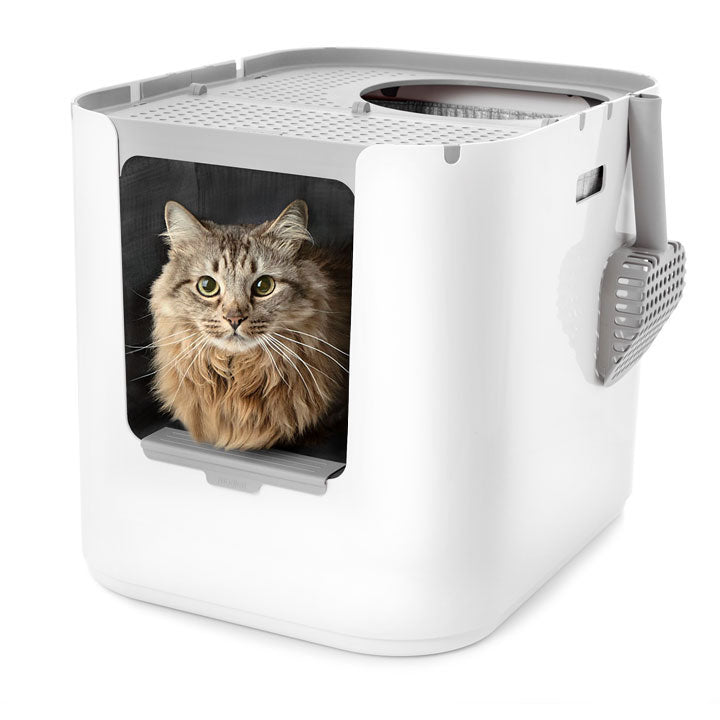
Modkat XL
Front/Top-Entry Litter Box
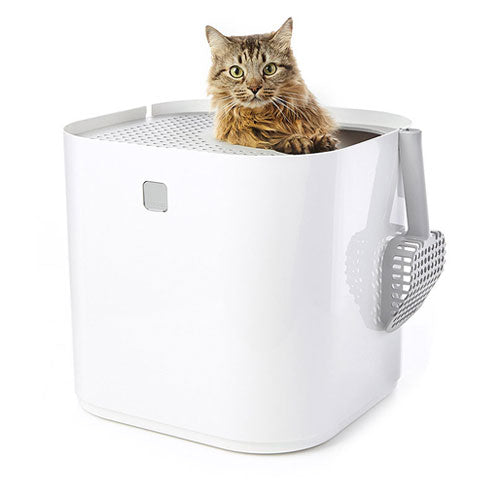
Modkat
Top-Entry Litter Box
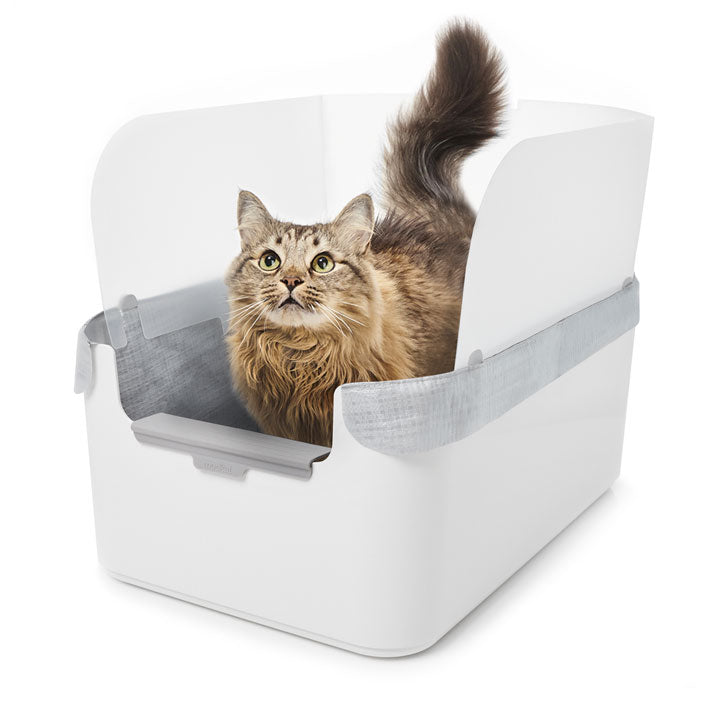
Modkat Tray
Open Litter Box
Accessories
Liners
All about service animals, therapy cats, and ESAs.

Ever caught yourself pondering how a simple snuggle from your pet can instantly dissolve your stress? As it turns out, therapy cats exist, and many use them to improve their mental well-being.
Let's explore the world of animal-assisted support, with a particular focus on therapy cats, ESA cats, and service animals. These amazing felines offer much more than just companionship—they provide valuable therapeutic benefits and emotional support to individuals with various challenges.
This article will discuss the differences between service animals, therapy cats, and ESA cats. We'll look at their training processes, how they're legally recognized, and their incredible influence on the lives of those they assist.
Understanding the differences.
Service animals in some form have been around for thousands of years. Murals preserved in the ruins of first-century Pompeii depict dogs helping blind people to navigate the city's streets. Throughout the centuries and across diverse cultures, animals have helped people with disabilities to perform daily tasks.
Service animals.
Today, the Americans with Disabilities Act (ADA) officially recognizes service animals, dogs and miniature horses specifically trained to perform an action for a person with a disability that the person cannot perform for themselves.
For example, a service animal might pull a wheelchair, lead a person with visual impairments, or alert a deaf person to certain sounds. These working animals often wear signs instructing you not to pet them while they are going about their duties.
Under the ADA, cats cannot be legally recognized as service animals. That designation—and the benefits that accompany it—is only available to dogs and miniature horses. However, cats can provide a lot of joy, entertainment, and even mental health assistance—and they can be officially recognized for their roles.
Therapy animals.
Unlike a service animal, a therapy animal is a pet of any species who interacts with many different kinds of people. These well-trained animals visit hospitals, nursing homes, schools, courtrooms, and other institutions to provide cheer, comfort, or entertainment to people.
A therapy cat is a good choice for people with limited mobility since cats often enjoy snoozing on a person's lap. Although they are not recognized by a federal agency, therapy animals may hold certification with a private organization.
That doesn't mean you can bring your therapy cat to a restaurant or hotel like you can a service animal, but it does give your pet credibility when you ask about taking them to visit residents in an institutional setting.
Emotional support animals.
An emotional support animal (ESA) provides companionship and may help relieve symptoms of anxiety, depression, or certain phobias. These animals require no specific skills, training, or certification, and consequently, they have the least recognition by law.
A calm, quiet cat can make an excellent ESA because their gentle presence can help lower stress levels, and their entertaining activities can help take people's minds off challenging situations.
They are not considered service animals by most airlines or by the Federal Aviation Administration, and the Fair Housing Act allows landlords to require a signed letter from a mental health professional before admitting a tenant with an ESA.
Can a cat be a service animal? Strictly speaking, no, because under the ADA, a cat cannot be recognized as helping a person with disabilities to perform tasks. However, a cat can work as a therapy animal or an ESA cat.
Cats as therapy animals.
Cats make great therapists. While a therapy cat can never replace a certified mental health professional, they can provide meaningful companionship and vital emotional support.
Therapy cats visit people in an array of therapeutic settings where pets are generally not permitted. These animals have a naturally friendly disposition toward people, and they have been carefully trained to work in the community because a therapy cat is really there to love and be loved.
For instance, a therapy cat might help a child with autism grow more comfortable with physical contact. Or they might help alleviate depression or irritability in a patient with dementia. Therapy pets have even been shown to reduce heart rate and blood pressure, lower the risk of cardiovascular disease, improve social support, and increase levels of the hormone oxytocin, which helps us feel better.
How are cats assessed and trained to become therapy cats?
Organizations such as Pet Partners, Animals 4 Therapy, Love on a Leash, and Wags for Hope help select and train therapy animals.
Before accepting a cat as a potential therapy animal, organizations usually require that the cat be well socialized, healthy, and properly groomed. They also expect the cats to be harness-trained. While few cats wear a leash or harness at home, therapy pets often have to wear them when they are working.
Once enrolled in a training course, your cat will learn the ropes of her new job—things like how to leave toys in order to focus on the people around them and how to stay on one person's lap to receive affection. They'll also learn to minimize their vocalizing when given a cue.
Training your cat for service as a therapy animal can strengthen your relationship with your pet. All the time you spend together in preparation and then in service can bond you and your cat in a unique and wholesome way.
Service animal cats.
Cats do not meet the ADA's requirements for service animals because, as a rule, they cannot be trained to do daily tasks like pull a wheelchair or guide a blind person through a crowd.
It's unlikely that felines will ever be recognized as service animals. First because it's not safe. Service dogs and miniature horses are much larger and stockier than any cat breed. They are strong, focused, and trainable—able to support the physical demands of their jobs.
Being a service animal requires intense focus and enormous emotional capacity. These animals have to stay on task for much longer than most cats can focus, and it's imperative that they remain calm no matter what is happening around them. As a whole, cats can't do that.
Although we're very unlikely to see the ADA recognize service animal cats, our feline friends can be trained to walk on leashes, do tricks, and sit still for love. That makes them potentially great therapy cats and emotional support animals.
Emotional support cats (ESAs).
ESA cats provide comfort and emotional support to their humans. These animals do not necessarily visit people in social settings. Their primary job is to provide companionship and emotional support to a single individual who may (or may not) have a diagnosed mental illness. Cats make great ESAs because their companionship has been proven to improve people's mental health.
How to register a cat as an ESA.
You do not have to register your emotional support animal with any public agency or private organization. However, you may want to do so as it can make some traveling and housing situations a lot easier. For example, if your landlord does not allow cats, registering your cat as an ESA is required to circumvent the "no cat" policy.
To register your cat as an ESA, you need a letter from a licensed mental health professional such as a licensed professional counselor, psychiatric nurse practitioner, or medical doctor. Normally, the letter should be on this professional's stationary, stating who you are, how long they have known you, in what capacity they know you, and why they believe you need an ESA. Your location may have other requirements.
This letter may help you access housing with your ESA under the Fair Housing Act. Be aware, however, that to qualify as an ESA, your pet must not pose a threat to other residents or behave in an out-of-control manner. Some airlines allow your ESA to fly with you, but the Air Carrier Access Act does not guarantee this privilege.
Getting started with your cat.
Does your cat have the temperament to be an ESA cat or therapy cat?
Any cat can become an emotional support animal. In fact, all pet cats who bring health and happiness into your life are already serving as ESAs, even if they aren't designated as such.
Healthy cats with no emotional disorders of their own can provide warm and deep companionship for their humans. Make sure that you are not allergic to cats before opting to add one to your life as an ESA.
How to prepare your pet to become a therapy cat.
If you suspect your cat has the temperament to be a good therapy animal, start by socializing your pet, training her to respond to your voice, and having her checked for any health conditions.
Then, visit your local pet products retailer and online pet-related sites to find out what organizations near you provide professional training or certification for therapy cats.
Resources for professional training and certification.
- The International Cat Association: ICA's pet therapy program has trained more than 15,000 volunteers nationwide. The organization offers registration for therapy cats and three subsequent levels of recognition, requiring 50-200 approved therapy visits.
- International Community of Anthrozoology: ICofA certifies therapy cats whose owners have completed an online theory course and a suitability assessment.
- Animal Behavior College’s Cat Training School: This organization can teach you how to train cats. You'll take courses in pet CPR and first aid among other topics to become an ABC Certified Cat Trainer (ABCCT).
FAQs on legal considerations and rights.
Let's take a look at some of the answers to some common questions about service animals, therapy cats, and ESAs.
What federal laws apply to service animals, therapy animals, and ESAs?
The Americans with Disabilities Act (ADA) applies to service animals, the Fair Housing Act (FHA) applies to both service animals and ESAs in housing, and the Air Carrier Access Act (ACAA) covers service animals in air travel. Therapy animals are generally covered by policies of individual institutions.
How do state laws vary regarding service animals, therapy animals, and ESAs?
State laws can provide additional protections or requirements beyond federal laws. For example, some states have laws that extend ADA protections to ESAs in public places, while others may have specific certification requirements for therapy animals.
What rights do individuals with service animals have in public spaces?
Individuals with service animals have the right to bring their animals into any place open to the public, including restaurants, stores, and hotels, under the ADA. The animal must be under control and not pose a direct threat to health and safety.
Can therapy cats and ESA cats accompany their owners in public spaces?
Therapy cats and ESA cats do not have the same public access rights as service animals. Their access to public spaces is generally subject to the policies of individual establishments.
What are the workplace rights of individuals with service animals, therapy cats, or ESA cats?
The ADA requires employers to provide reasonable accommodations for employees with disabilities, which may include allowing a service animal. ESAs and therapy animals are not covered by the ADA, but employers may still accommodate them under their own policies or other applicable laws.
What housing rights do individuals with service animals, therapy cats, or ESA cats have?
Under the FHA, individuals with service animals and ESAs have the right to keep their animals in housing that otherwise has a no-pet policy, as long as they can provide documentation of their disability and the need for the animal. Therapy cats do not have these protections unless the housing provider chooses to allow them.
How can people advocate for their rights regarding their service animal, therapy cat, or ESA cat?
Individuals can advocate for their rights by being informed about the relevant laws, providing necessary documentation, communicating clearly with housing providers, employers, and public establishments, and seeking legal assistance if their rights are violated.
Conclusion.
Take care of the feline(s) that take care of you. Show them a little TLC with accessories and litter boxes from our stylish collection.
“It looks nicer than any other hooded or open option we considered.”

Categories
Purrr News.
Join our email list and get exclusive access to new products, the best cat litter box health articles, and 10% off your first order!
Similar products related to this blog:
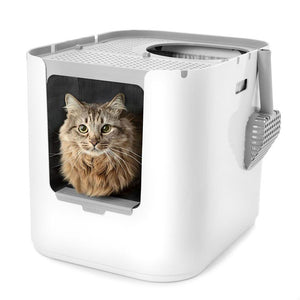
"It looks nicer than any other hooded or open option we considered."


"This litter box keeps everything in, nothing gets out the sides."

"My beautiful ragdoll cat and I both love the new Modkat Litter tray!"

